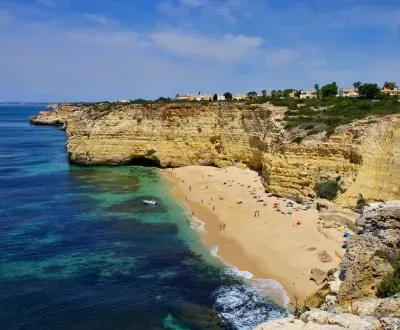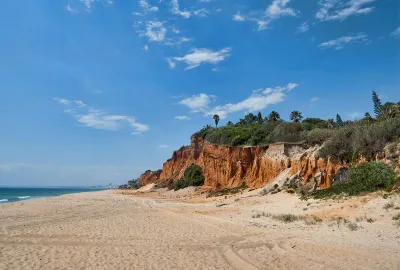Marvão Castle view
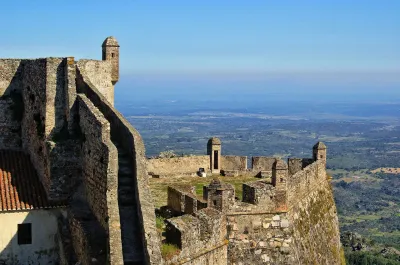
The sweeping view from the 13th century Marvão castle which is perched atop this hilltop village in Northern Alentejo. The castle was built to protect the Serra of Alto Alentejo from the Spanish just across the nearby border.
Capela dos Ossos - Evora

The Capela dos Ossos (Chapel of Bones) in Evora is a wonderfully macabre reminder of our own mortality. It is located to the rear of the Igreja de São Francisco and was built during the 16th century by one of the Franciscan monks who thought it a nice idea to make his fellow monks contemplate on their own mortality. It seems things got a little carried away as the inside is covered in over 5,000 skulls plus a couple of desiccated corpses dangling from the ceiling!
Igreja do Carmo interior, Faro
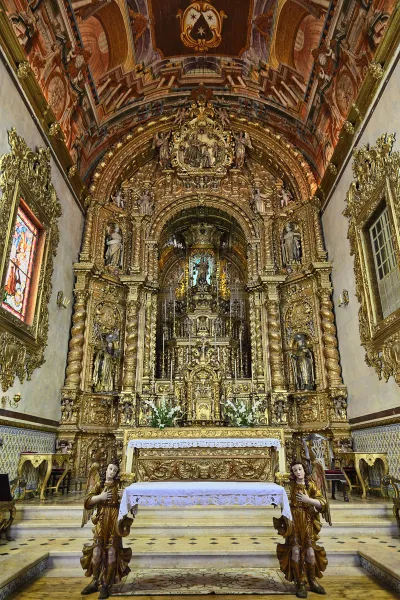
The lavish interior of Faro's Igreja do Carmo. The gilded carved wood is typical of churches throughout Portugal but the decor on offer here is the work of master sculptor Manuel Martins. The money to pay for ehis lavish interior is said to have paid for by Brazilian gold back in the days when Portugal had an empire.
Igreja do Carmo, Faro

The Baroque façade of the Igreja do Carmo church in Faro is easy to spot with its twin bell towers and flaking whitewash. Built during most of the 18th century this is one of Faro's finest churches both inside and out. The interior is fairly extravagant and also includes the somewhat macabre Capela dos Ossos (Chapel of Bones).
Sé de Faro (Cathedral) at night

The cathedral (or Sé) in Faro dates back to the 13th century when the town was reconquered from the Moors. Work began almost immediately on this, the church of Santa Maria.
Much of what you see dates back to this time, although the church was extended and also repaired after the 1755 earthquake. It is a different story for the interior though. In 1596 British troops under the command of the Earl of Essex looted and burned the cathedral, gutting it. However, the wood carving and gilding that replaced the original interior are suitably sumptuous and will not dissapoint.
The Anchor Graveyard - Praia do Barril

The Anchor Graveyard (Cemitério das Âncoras) is located on the Ilha de Tavira behind the beach at Praia do Barril. This strange arrangement of anchors is in fact a kind of memorial to the lost tuna fishing industry that once thrived here. The anchors themselves were used to keep the nets in place as opposed to mooring the boats.
Praia da Bordeira
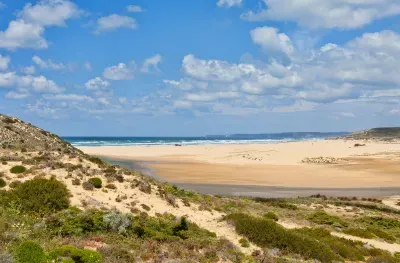
Peeking over the dunes and past the river towards the vast expanse of sand that is Bordeira. At low tide this beach stretches for around 3km up the coast.
This is the exposed west coast of the Algarve and has a much wilder feel than around the corner. Instead of cliffs there are sand dunes and the waves here are far bigger and more powerful.
Praia da Falésia from above
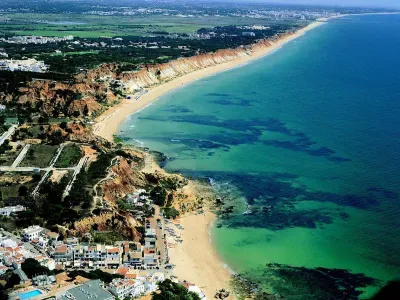
An aerial view of Praia da Falésia (beach) which is situated about halfway between Albufeira and Quarteira. The name of the beach comes from the distinctive red cliffs which back onto it
